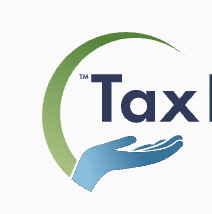
Both can dramatically reduce what you owe, but they work differently. OIC negotiates with the IRS to settle for less, while bankruptcy can eliminate qualifying tax debt through court proceedings.
This guide compares both options side-by-side, including eligibility, costs, timelines, and outcomes. Plus, when to seek help by comparing our best tax relief companies or bankruptcy attorneys.
Key Insights
- OIC settles for 10-20% typically, but has only a 25% acceptance rate and requires demonstrating inability to pay in full.
- Bankruptcy can eliminate old tax debt, but only debts meeting strict criteria: 3+ years old, filed 2+ years ago, assessed 240+ days ago.
- Credit impact differs significantly: OIC doesn't appear on credit reports, and bankruptcy remains for 7-10 years.
- Professional help is essential for either path—tax professionals for OIC, bankruptcy attorneys for Chapter 7/13.
OIC vs. Bankruptcy
| Factor | Offer in Compromise | Bankruptcy (Chapter 7) | Bankruptcy (Chapter 13) |
|---|---|---|---|
| Cost | $205 fee + 10-20% of debt + professional fees ($3K-$10K) | $338 court fees + attorney fees ($1.5K-$3K) | $313 court fees + attorney fees ($3K-$6K) |
| Timeline | 6-12 months | 3-6 months | 3-5 years |
| Credit impact | No direct entry (tax lien may show) | 10 years on credit report | 7 years on credit report |
| Success rate | ~25% acceptance | High, if debts meet criteria | High completion rate |
| Assets | Keep all assets | Non-exempt assets may be sold | Keep all assets, pay through plan |
| Debt eliminated | Negotiated percentage | 100% of qualifying tax debt | Qualifying debt after plan completion |
| Other debts | Tax debt only | All dischargeable debts | Restructures all debts |
What Is an Offer in Compromise?
An Offer in Compromise is a settlement program where the IRS may agree to accept less than the full amount owed, but only if the taxpayer can’t reasonably pay the liability through income, assets, or installment payments.
The IRS accepts your offer if:
Doubt as to collectibility: You can't pay the full debt within the collection period.
Doubt as to liability: Legitimate dispute about whether you owe the debt.
Effective tax administration: Paying would create economic hardship or be unfair.
Most applications are based on the inability to pay in full. In fiscal year 2024, the IRS accepted 7,199 out of 33,591 OIC applications (21% acceptance rate).
OIC Eligibility Requirements
Before the IRS will consider your offer, you must have filed all tax returns, made current year estimated payments, have no open bankruptcy proceeding, and demonstrate a genuine inability to pay through the IRS's reasonable collection potential calculation.
Typical Process and Timeline for OIC
Step 1: Application (Form 656)
Application fee: $205 (waived for low-income).
Initial payment: 20% of the offer (lump sum) or first installment.
Financial documentation: Income, expenses, assets, debts.
Step 2: IRS Review for OIC
Processing time: 6-12 months average
IRS may request additional documentation
May propose a counteroffer
Step 3: OIC Acceptance or Rejection
- If accepted: Make remaining payments, stay compliant for 5 years
- If rejected: Appeal within 30 days or explore other options
Important: The IRS won't consider an OIC unless all required tax returns are filed and the taxpayer is current on required payments (including withholding/estimated tax).
What You'll Pay with an OIC
Settlement amounts typically range from 10-20% of total debt, but the IRS calculates your offer using a strict formula:
Reasonable Collection Potential = Available equity in assets + Future income
Future income equals monthly disposable income multiplied by 12 months (lump sum) or 24 months (periodic payment), using IRS Collection Financial Standards for allowable expenses, not your actual expenses.
Bankruptcy Relief for Tax Debt
Unlike OIC, which negotiates with the IRS, bankruptcy is a legal court process that can eliminate qualifying tax debts completely if specific conditions are met.
Chapter 7 vs. Chapter 13 Bankruptcy
The key difference between Chapter 7 and Chapter 13 in handling tax debt is how the debt is treated and whether it can be discharged.
- Chapter 7 bankruptcy: Certain income tax debts may be completely discharged if they meet the timing rules. Generally, the taxes must be for a return filed at least two years ago, the tax assessment must be at least 240 days old, and there must be no fraud or willful tax evasion.
- Chapter 13 bankruptcy: Doesn't immediately eliminate the debt. It creates a structured 3- to 5-year repayment plan in which recent or priority tax debts must be paid in full, while older, dischargeable tax debts may be paid at a reduced amount or even eliminated at the end of the plan.
| Factor | Chapter 7 (Liquidation) | Chapter 13 (Reorganization) |
|---|---|---|
| Timeline | 3-6 months | 3-5 years |
| Assets | Non-exempt assets may be sold | Keep all assets |
| Income requirement | Must pass means test (income below state median) | Available to higher earners |
| Tax debt treatment | Qualifying debt discharged entirely | Priority tax paid through plan; older debt discharged after completion |
| Credit impact | 10 years on credit report | 7 years on credit report |
Financial experts typically recommend Chapter 7 when the tax debt qualifies for discharge and the taxpayer has limited assets. Chapter 13 tends to be preferable when the taxpayer has non-dischargeable recent tax debt, needs protection from aggressive collection, or needs time to catch up on missed payments while preventing liens or levies.
Which Tax Debt Qualifies for Discharge?
Bankruptcy won't eliminate all tax debt automatically. The debt must meet very specific timing requirements, and missing even one means the debt survives bankruptcy.
3-year rule: Tax return due date was at least 3 years ago (including extensions).
2-year rule: You filed the return at least 2 years before bankruptcy filing.
240-day rule: IRS assessed the tax at least 240 days before bankruptcy (assessment date shown on IRS transcripts).
No fraud or evasion: You didn't file a fraudulent return or willfully evade taxes.
Income tax only: Payroll taxes, fraud penalties, and some other taxes are never dischargeable.
Example: Tax return due April 15, 2022. Filed on time. Assessed May 1, 2022. Eligible for discharge in bankruptcy filed after April 15, 2025 (3-year mark).
When to Choose OIC vs. Bankruptcy
Your specific circumstances, like debt age, total amount, other debts, income, and assets, determine which option serves you best.
Choose OIC If You Have:
- Only tax debt: No other significant debts like credit cards or medical bills that bankruptcy could eliminate.
- Recent tax debt: Doesn't meet the 3-2-240 bankruptcy discharge rules.
- Significant assets: Non-exempt assets that Chapter 7 would liquidate.
- A business: Want to avoid public filing and maintain licenses. Business tax debt is more serious than personal tax debt, so make sure you understand the implications.
- Low collection potential: Income and assets much lower than total debt under IRS formulas.
Choose Bankruptcy If You Have:
- Old tax debt: Meets all 3-2-240 discharge criteria.
- Multiple debt types: Credit card debt, medical bills, or personal loans beyond taxes.
- Active wage garnishment: Need immediate automatic stay protection.
- Lower income: Qualify for Chapter 7 means test with few non-exempt assets.
- Rejected OIC: Can't meet reasonable collection potential threshold.
OIC vs. Bankruptcy Considerations for Business Owners
If you own a business, your choice has additional implications for operations, credit, and professional licenses.
OIC Advantages for Businesses
No public bankruptcy filing affecting business credit
Maintain professional licenses (some states suspend for bankruptcy)
Continue business operations without trustee oversight
Negotiate business and personal tax debt together
Bankruptcy Complications for Businesses
Chapter 7 may force business closure
Chapter 13 requires trustee approval for major business decisions
Business credit severely impacted
Professional licenses may be suspended in some states
The IRS received a total of 33,591 Offers in Compromise applications in the 2024 fiscal year, while there was a total of just 23,107 business bankruptcy filings, including for reasons other than tax debt.
How to Prepare Your Application
Both options require extensive financial documentation. Proper preparation improves your chances of success.
OIC Application
Documents needed for OIC application:
- Three months of bank statements and pay stubs
- Asset valuations (home, vehicles, investments)
- Monthly expense documentation
- Collection Information Statement (Form 433-A or 433-B)
Before applying for OIC:
- File all unfiled tax returns
- Make current year estimated payments
- Calculate your reasonable collection potential
- Hire a tax professional (30-40% acceptance rate vs. 15-20% without)
Bankruptcy Filing
Documents needed for bankruptcy filing:
- Six months of income records from all sources
- Two years of tax returns
- Complete list of debts, creditors, and assets
- Recent credit report and monthly expense records
Before filing for bankruptcy:
- Complete required credit counseling course
- Request IRS transcripts to verify 3-2-240 eligibility
- Calculate means test eligibility
- Identify exempt vs. non-exempt assets
- Consult a bankruptcy attorney (required)
How to Choose Professional Tax Help for OIC and Bankruptcy
Successfully navigating either option requires professional representation. Choose carefully, the right representative significantly impacts your outcome.
For OIC: Tax Professionals
Look for Enrolled Agents, CPAs, or tax attorneys with specific OIC experience. Ask about their acceptance rate, total fees, and what happens if rejected. Professional representation increases acceptance rates from 15-20% to 30-40%.
Avoid these red flags:
- Guarantees of specific settlement amounts
- Upfront fees before reviewing your case
- Claims of special IRS relationships
For Bankruptcy: Attorneys
Choose a licensed attorney in your state with bankruptcy specialization and tax debt discharge experience. Ask whether your debt qualifies for discharge, whether to file Chapter 7 or 13, and what the total cost includes.
Avoid these warning signs:
- Non-attorney bankruptcy petition preparers
- Promises that all tax debt will be eliminated
- Attorneys with no bankruptcy specialization
The Bottom Line
Start by determining whether your tax debt is dischargeable in bankruptcy using the 3-2-240 rules. If it meets bankruptcy timing tests, Chapter 7 can wipe out the entire balance. If the debt is too recent or you have low collection potential, an Offer in Compromise may be better. The critical first step is reviewing your debt age, when returns were filed, and when the IRS assessed the tax.
Frequently Asked Questions
1. Can I try an OIC and then file bankruptcy if rejected?
Yes, but filing bankruptcy stops the OIC process. If OIC is rejected, you can file for bankruptcy afterward. Strategic timing matters—consult both a tax professional and a bankruptcy attorney.
2. What if I owe both federal and state tax debt?
OIC only addresses federal debt—negotiate state debt separately. Bankruptcy can discharge both federal and state tax debt if it meets discharge requirements.
3. Can OIC or bankruptcy help with business payroll taxes?
This is a critical difference. Bankruptcy cannot discharge payroll taxes (often called "trust fund recovery penalties" or "trust fund taxes") under any circumstances, as they are considered a high-priority debt. An OIC, however, can be used to negotiate and settle business payroll tax debt, making it one of the few options available for this type of liability.


